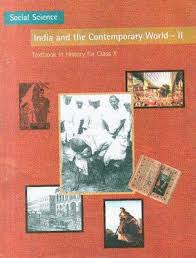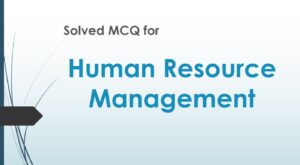Class 10 - Social Science : India and the Contemporary World II
Chapter 4 - The Making of Global World

Top Block 1
Question : 1. Give two examples of different types of global exchanges which took place before the 17th century, choosing one example from Asia, and one from the America.
Answer :
(i) Exchange of food : Food offers many examples of long distance cultural exchange. It is believed that ‘noodles’ travelled west from China to become ‘spaghetti’.
(ii) Exchange of germs : The Portuguese and Spanish conquests and colonisation of America was decisively underway by the mid-sixteenth century. The European conquest was not just a result of superior firepower. In fact, the most powerful weapon of the Spanish conquerors was not a conventional military weapon at all. It was the germs such as those of smallpox that they carried on their person. Because of their long isolation, America’s original inhabitants had no immunity against these diseases that came from Europe. Smallpox in particular proved a deadly killer. Once introduced, it spread deep into the continent, ahead even of any European reaching there. It killed and decimated whole communities, paving the way for conquest.
Question : 3. Write a note and explain the effects of the following :
(c) The death of men of working-age in Europe because of the World War.
(d) The Great Depression on the Indian economy.
(e) The decision of MNCs to relocate production to Asian countries.
Answer :
(c) (i) Reduction in the work force : Most of the killed and injured were men of working age. These deaths and injuries reduced the able-bodied workforce in Europe. With fewer numbers within the family, the household income declined after the war.
(ii) New Social Set-up : The entire societies were reorganised for war – as men went to battle, women stepped in to undertake jobs that earlier only men were expected to do.
(e) (i) Wages are relatively low in Asian countries due to excess supply of workers.
(ii) Most of these economies have low cost structure.
(iii) Most of these countries have a huge market.
Question : 4. Give two examples from history to show the impact of Science and Technology on food availability.
Answer :
(i) Availability of cheap food in different markets : Improvements in transport; faster railways, lighter wagons and larger ships helped move food more cheaply and quickly from the far away farms to the final markets.
(ii) Impact on meat : Till the 1870s, meat from America was shipped to Europe in the form of live animals which were then slaughtered in Europe. But live animals took up a lot of ship space. But the invention of refrigerated ships made it possible to transport meat from one region to another. Now animals were slaughtered in America, Australia or New Zealand, and then transported to Europe as frozen meat. The invention of refrigerated ship had the following advantages :
1. This reduced shipping costs and lowered meat prices in Europe.
2. The poor in Europe could now consume a more varied diet.
3. To the earlier, monotony of bread and potatoes many, not all, could add meat, butter and eggs.
4. Better living conditions promoted social peace within the country, and support for imperialism abroad.
Question : 9. (ii) In what ways can G-77 be seen as a reaction to the activities of the Bretton Woods Twins ?
Answer :
(ii) By establishing G-77, they could.
1. Get real control over their natural resources.
2. More assistance in their development.
3. Fairer prices for raw materials.
4. Better access for their manufactured goods.
Mddle block 1
Multiple Choice Questions
Question : 1. Peoples livelihood and local economy of which one of the following was badly affected by the disease named Rinderpest [CBSE (CCE) 2011]
(a) Asia
(b) Europe
(c) Africa
(d) South America
Question : 2. Which of the following powerful weapons were used by the Spanish Conquerors to colonise America during mid 17thcentury. [CBSE (CCE) 2011]
(a) Coventional Military weapons
(b) Modern Military weapons
(c) Biological weapons
(d) Nuclear weapons
Question : 3. Why did the wheat price fall down by 50 per cent between 1928 and 1934? [CBSE (CCE) 2011]
(a) Due to less production
(b) Due to floods
(c) Due to great depression
(d) Due to droughts
Question : 4. Most Indian indentured workers came from [CBSE (CCE) 2011]
(a) Eastern Uttar Pradesh
(b) North-eastern states
(c) Jammu and Kashmir
(d) None of these
Question : 5. Who adopted the concept of an assembly line to produce automobiles ?
(a) Henry Ford
(b) T. Cuppola
(c) V.S. Naipaul
(d) Samuel Morse
Question : 6. In ancient period the cowries were used as
(a) jewellery
(b) currency
(c) unit of Weight
(d) utensil
Question : 7. Which of the following diseases killed the majority of America’s original inhabitants ?
(a) Cholera
(b) Small Pox
(c) Typhoid
(d) Plague
Question : 8. In which place of India were the ‘canal colonies’ set up ?
(a) Punjab
(b) Haryana
(c) Uttar Pradesh
(d) Assam
Question : 9. The fast spreading disease of cattle plague is known as
(a) cattle fever
(b) bubonic plague
(c) rinderpest
(d) chicken pox
Question : 10. Which of the following place was an important destination for indentured migrants ?
(a) Florida
(b) Melbourne
(c) Carribbean island
(d) Mexico
Question : 11. At which of the following states in USA was the United Nations Monetary and Financial Conference held in 1944?
(a) New Hampshire
(b) New York
(c) San Francisco
(d) New Jersey
Question : 12. Which two institutions are well-known as Bretton Wood Institution ?
(a) UNICEF and IMF
(b) WHO and World Bank
(c) IMF and World Bank
(d) UNESCO and UNICEF
Question : 13. Who introduced the assembly line method for producing automobiles on a large scale ?
(a) V.S. Naipaul
(b) Henry Morton Stanley
(c) Henry Ford
(d) James Watt
Question : 14. Newly irrigated areas to settle peasants of Punjab were known as
(a) Watered colonies
(b) Canal colonies
(c) Punjab colonies
(d) Canalised colonies
Question : 15. The group of powers collectively known as the Axis power during the 2nd World War were
(a) Germany, Italy, Japan
(b) Austria, Germany, Italy
(c) France, Japan, Italy
(d) Japan, Germany, Turkey
Question : 16. Who among the following is a Nobel prize winner ?
(a) V.S. Naipaul
(b) J.M. Keynes
(c) Shivnarine Chanderpaul
(d) RamnareshSarwan
Question : 17. Which of the following combination correctly indicates the three flows of international economic exchange ?
(a) Capital, goods, raw material
(b) Goods, metal, labour
(c) Goods, labour, capital
(d) Labour, capital, food grains
Question : 18. Which of the following statement correctly identifies the corn laws ?
(a) Restricted the import of corn to England.
(b) Allowed the import of corn to England.
(c) Imposed tax on corn.
(d) Abolished the sale of corn.
Question : 19. Which of the following refers to El Dorado ?
(a) A mythical animal
(b) A legendary god
(c) A fabled city of gold
(d) A sacred place of worship
Question : 20. Until 18th century which two countries were considered the richest in the world ?
(a) India and China
(b) China and Japan
(c) England and France
(d) England and Italy
Question : 21. Which of the following reflects the cultural fusion between India and Trinidad ?
(a) Native dancing
(b) Chutney music
(c) Religious practices
(d) Cottage industries
Question : 22.Transport of perishable goods over long distance was possible because of
(a) improved railways
(b) airline services
(c) refrigerated ships
(d) steamships
Question : 23. Which of the following sustained the African lives for centuries ?
(a) Industries and mines
(b) Mines and agriculture
(c) Land and livestock
(d) Production of consumer goods
Question : 24. In Trinidad what was referred as Hosay ?
(a) Annual Muharram procession marking a carnival
(b) Christmas Celebration
(c) Easter Festival
(d) New Year Celebration
Question : 25. What is meant by tariff ?
(a) Tax imposed on goods.
(b) Tax imposed on a country’s import from the rest of the world.
(c) Tax imposed on countries’ export to other countries.
(d) Tax imposed on handmade goods.
Question : 26. The World Bank was set-up to
(a) finance rehabilitation of refugees.
(b) finance post war construction.
(c) finance industrial development.
(d) help third world countries.
Question : 27. Mark the correct response out of the following :
(a) The silk route acted as a link between different countries.
(b) The silk route helped in cultural and commercial exchange.
(c) The silk route acted as a route for west bound silk cargos from China.
(d) All the above.
Question : 28. Why was the 19th century indenture described as a system of slavery ? Mark the most suitable statement.
(a) Lots of slaves worked in the plantation.
(b) The living and working condition of the indentured labourers were harsh.
(c) The indentured labourers did not have any rights and lived like slaves.
(d) The indentured labourers were not paid any salary.
Question : 29. Why did the export of fine Indian textile to England decline in 19th century ?
(a) Production of cotton declined
(b) Demand of Indian textile in England declined
(c) British government imposed heavy tariff on import of cotton textile
(d) Indian merchants refused to sell cotton to the British merchants
Question : 30. Which of the following resulted in Britain’s trade surplus ?
(a) British export to India was much higher than British imports from India.
(b) Britain’s export of opium from India increased.
(c) British import from India became higher than British export to India.
(d) Import of cotton from India was profitable for the British merchants.
Question : 31. Which of the following factor compelled the Africans to work for wages ?
(a) Poverty
(b) Loss of livestock
(c) Oppression by colonisers
(d) Willingness to work for wages
Question : 32. Which of the following is the most important cause for the Great Depression ?
(a) Decline in agricultural production
(b) Agricultural overproduction leading to fall of prices in agricultural goods
(c) Loss of employment leading to poverty
(d) Closure of banks and factories
Question : 33. Why were the Europeans attracted most to Africa ?
(a) By its natural beauty
(b) By the opportunities for investment
(c) For its vast land resources and mineral wealth
(d) For recruitment of labour
Question : 34. Which of the following enabled the Europeans to conquer and control the Africans ?
(a) Victory in war
(b) Control over the scarce resource of cattle
(c) Death of Africans due to rinderpest
(d) Lack of weapons in Africa to fight against the Europeans
Question : 35. Which of the following is the direct effect of Great Depression on Indian Trade ?
(a) Peasants and farmers suffered
(b) Indian exports and imports nearly halved between 1928-1934
(c) Peasants’ indebtedness increased
(d) Led to widespread unrest in rural India
ANSWERS
|
|
|
|



